Mastering the Art: How to Grow Cherry Pie Strain Successfully

If you’re a cannabis enthusiast who’s looking to expand their growing experience, Cherry Pie strain is an excellent choice. This hybrid strain is known for its sweet and fruity aroma, powerful effects, and high yields. But how do you grow Cherry Pie strain successfully? In this guide, I’ll take you through the step-by-step process of growing this popular strain, from understanding its genetics and characteristics to providing the right care and harvesting techniques.
- Understanding the genetics and characteristics of Cherry Pie strain is crucial before growing.
- Choosing the right seeds or clones is important for a successful start to your growing journey.
- The perfect growing environment involves proper lighting, temperature, humidity, and airflow.
- Nurturing Cherry Pie plants with the right nutrients, watering, and care is essential for their overall health.
- Harvesting Cherry Pie buds at the right time and curing them properly enhances their flavors and potency.
Understanding Cherry Pie Strain: Genetics and Characteristics
Before we start with the growing process of Cherry Pie strain, let’s dive into the genetics and characteristics of this popular hybrid. Cherry Pie strain is a cross between Granddaddy Purple and Durban Poison, resulting in a well-balanced, indica-dominant strain.
With a sweet and fruity aroma, Cherry Pie strain has a flavor profile reminiscent of cherries and baked goods, making it a favorite among cannabis enthusiasts. Its effects are known to induce a relaxed and euphoric state, making it an excellent choice for reducing stress and anxiety.
Cherry Pie strain has a relatively high THC level, ranging from 16% to 23%, and typically has a flowering time of 8-9 weeks. When grown successfully, Cherry Pie strain produces dense, resinous buds with a bright green color and orange hairs.
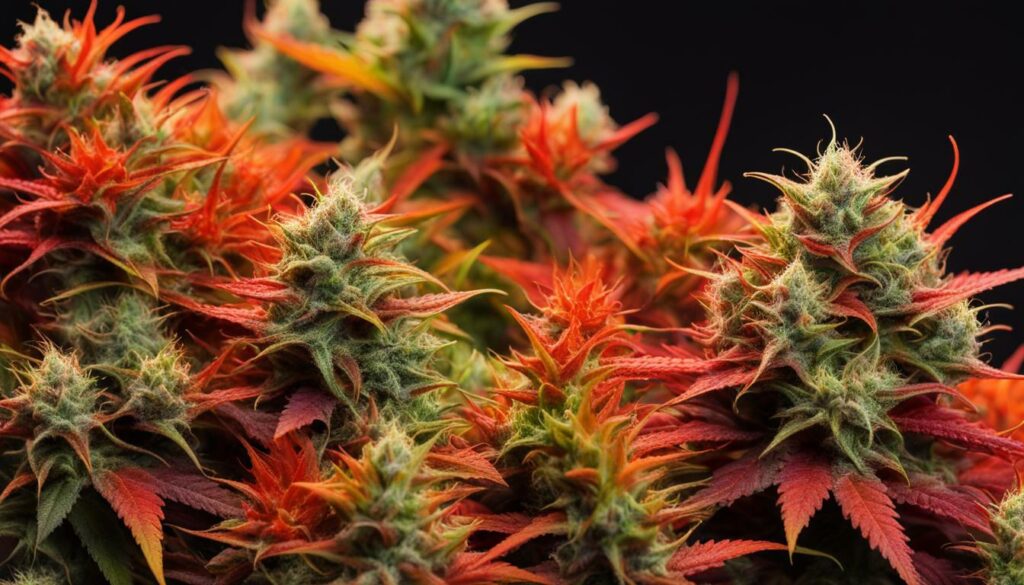
If you’re looking for a strain that offers a balanced high and a delectable taste and aroma, Cherry Pie strain is an excellent choice for your next grow. Understanding the characteristics and genetics of the strain is the first step in mastering the art of growing Cherry Pie successfully.
Choosing the Right Seeds or Clones for Cherry Pie Strain
When it comes to growing your own Cherry Pie strain, one of the first decisions you’ll need to make is whether to start with seeds or clones. While both options have their advantages, it’s important to choose the one that best fits your needs and growing preferences.
Seeds
If you’re starting from scratch and want full control over your plants’ genetics, buying Cherry Pie strain seeds is the way to go. This will allow you to ensure that your plants are true to the strain and have the desired characteristics you’re looking for. Additionally, seeds provide greater flexibility in terms of timing, allowing you to start your grow operation whenever you’re ready.
When purchasing Cherry Pie strain seeds, it’s important to source from a reputable dealer to ensure quality and authenticity. One option is SeedsHereNow.com, which offers a wide selection of cannabis seeds, including Cherry Pie strain, from trusted breeders. Be sure to read reviews and check the seller’s reputation before making a purchase.
Clones
If you’re looking for a shortcut to a guaranteed female plant, clones may be the way to go. Clones are cuttings taken from a female Cherry Pie plant, which have the same genetics and characteristics as the parent plant. This method is quicker than starting from seeds, as clones can be planted directly in soil or a hydroponic system and will begin vegetative growth immediately.
When selecting Cherry Pie clones, make sure to choose healthy-looking, disease-free plants. It’s also important to note that clones are more sensitive to environmental stress and changes, so it’s crucial to maintain a stable growing environment to ensure their survival.
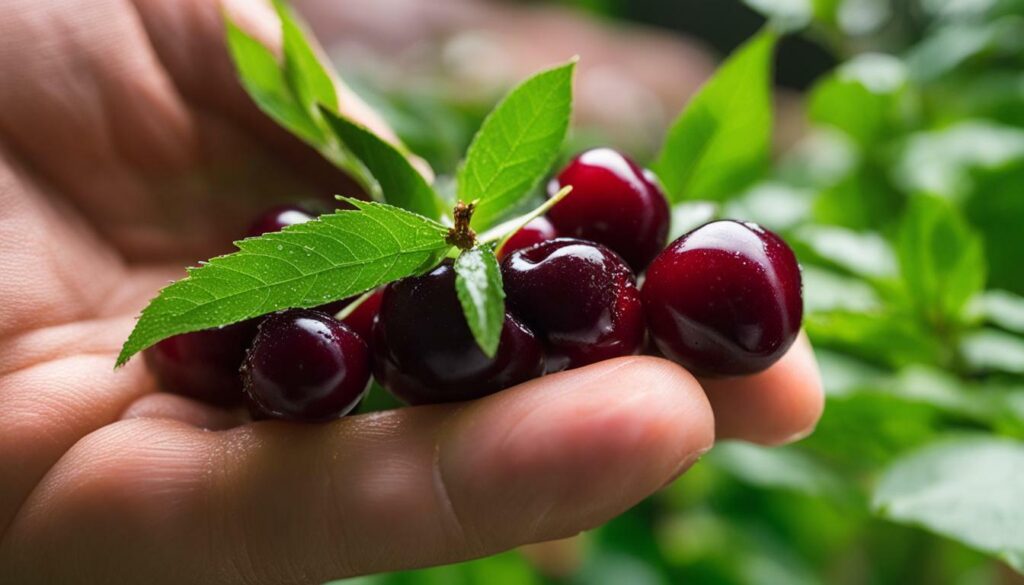
Whether you choose seeds or clones, starting with high-quality genetics is key to a successful grow operation. Take the time to research and choose the best option for your needs, and you’ll be on your way to growing a bountiful crop of Cherry Pie strain.
Creating the Perfect Growing Environment for Cherry Pie Strain
Providing the right growing environment is essential for Cherry Pie strain to thrive. In this section, I’ll discuss the key factors to consider when creating an optimal growing space.
Lighting
Cherry Pie strain needs plenty of light to grow successfully. During the vegetative stage, a recommended light intensity of 600-1000 micromoles per meter squared per second (umol/m2/s) for 18-24 hours per day can help achieve vigorous growth. During the flowering stage, the ideal light intensity decreases to 400-600 umol/m2/s for 12 hours per day to encourage bud development. LED grow lights are a popular choice for growers as they are energy-efficient and provide full-spectrum light that can simulate natural sunlight.
Temperature and Humidity
Cherry Pie strain thrives in temperatures between 68-77°F (20-25°C) during the day and 59-68°F (15-20°C) at night. Make sure to maintain a consistent temperature to prevent stress and ensure optimal growth. Humidity levels should be around 50-60% during the vegetative stage and 40-50% during the flowering stage to prevent mold and mildew.
Airflow
Airflow is crucial for preventing stagnant air and maintaining healthy plants. A gentle breeze can help keep the temperature and humidity at optimal levels while promoting strong stem growth. Make sure to provide proper ventilation and avoid overcrowding plants to prevent the spread of disease.
Soil and Nutrients
Cherry Pie strain prefers well-drained, nutrient-rich soil with a pH level between 6.0-6.5. Adding organic matter like compost or worm castings can improve soil quality and provide nutrients for the plants. During the vegetative stage, a balanced fertilizer with a higher ratio of nitrogen can promote healthy vegetative growth, while a bloom booster fertilizer with a higher ratio of phosphorus can encourage bud development during the flowering stage.
By creating the perfect growing environment for your Cherry Pie strain plants, you can ensure they reach their full potential and produce a bountiful harvest.
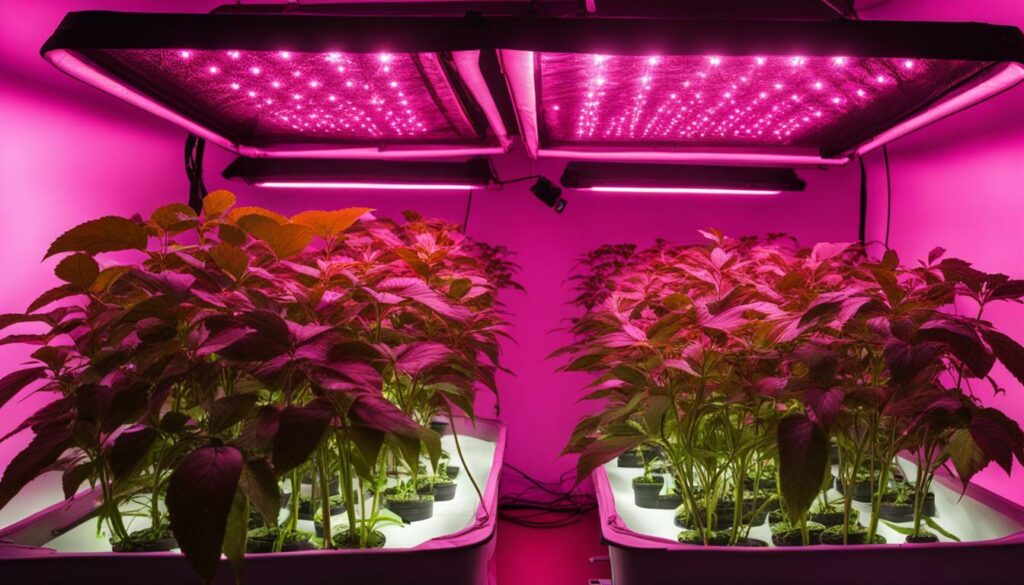
Just like any living thing, Cherry Pie plants need proper nourishment and care to thrive. Understanding the specific nutrients they require, developing a watering routine, and providing general care are all essential elements to ensure the health and vitality of your plants.
Choosing the Right Nutrients
Cherry Pie plants require specific nutrients to support their growth and blooming stages. Typically, you’ll need to use a blend of nitrogen, phosphorus, and potassium-rich fertilizers. During the vegetative stage, higher levels of nitrogen are necessary for leaf growth and overall plant development. As the plants begin to flower, switch to a fertilizer with a higher concentration of phosphorus to encourage bud formation.
Watering Your Cherry Pie Plants
Watering your Cherry Pie plants is a delicate balance. Overwatering can lead to root rot, while underwatering can hinder growth and cause nutrient deficiencies. A general rule of thumb is to water your plants when the top inch of soil feels dry. The amount of water your plants need can vary depending on factors such as temperature, humidity, and the size of your plants. Be sure to water your plants slowly and deeply to promote healthy root growth.
General Care Tips
Caring for your Cherry Pie plants means paying attention to their overall health and addressing any issues that arise. Regularly inspect your plants for signs of pests or diseases and take prompt action to prevent them from spreading. Additionally, proper lighting and air circulation can help your plants grow strong and healthy. Keep a close eye on your plants and adjust your growing environment as needed to optimize their growth.

“Properly nourishing and caring for your Cherry Pie plants is essential for their overall health and robust growth.”
By understanding the nutrients Cherry Pie plants need, developing a proper watering routine, and providing general care, you’ll set your plants up for success. Remember to keep a watchful eye on your plants and address any issues promptly to ensure a bountiful harvest.
Flowering and Harvesting: When and How to Harvest Cherry Pie Buds
As your Cherry Pie plants continue to grow, they will eventually enter the flowering stage. This is when the buds begin to develop and fill out, becoming more aromatic and potent with each passing day. It’s important to pay close attention to your plants during this time, as the timing of the harvest can greatly impact the quality and quantity of your yield.
The first sign that your Cherry Pie buds are ready for harvest is when the pistils, or tiny hairs on the buds, start to change color from white to a darker shade. This indicates that the buds are reaching maturity and are producing the highest amount of trichomes, the resin glands that contain the precious cannabinoids and terpenes.
Another way to determine if your buds are ready for harvest is by examining the trichomes under a magnifying glass. You’re looking for the trichome heads to appear cloudy or milky, with some turning amber or brown depending on your desired effect. Harvesting when the trichomes are at their peak will ensure the best potency and flavor from your Cherry Pie buds.
When it comes to the actual harvesting process, it’s important to cut the buds carefully and precisely to avoid damaging the plant. Use a pair of sharp pruning shears to snip the branches just above the buds, leaving a small stem for hanging or trimming later. An important note is that the buds will continue to dry and cure even after the plant is cut, so be sure to keep them in a dry, dark and well-ventilated place to avoid mold and mildew.
After harvesting, it’s important to cure the buds before enjoying them for maximum flavor and potency. This involves hanging the buds upside down in a cool, dark, and dry space for a few days to dry out and then placing them in a sealed jar to “sweat” for a week or two, which helps release the remaining moisture and create a more desirable texture and taste. Properly curing your Cherry Pie buds will lead to a more enjoyable and satisfying experience.
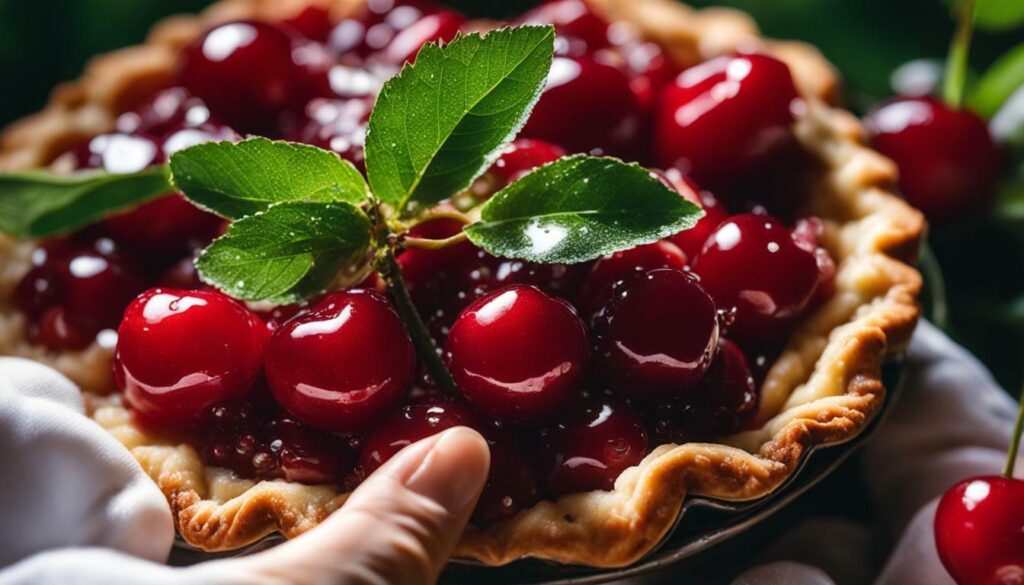
Even with the best growing practices, your Cherry Pie plants may encounter pests and diseases. Identifying and addressing these issues promptly is essential to preserve the health and yield of your crop.
Pests: Common pests that can afflict Cherry Pie plants include spider mites, thrips, aphids, and caterpillars. Early signs of infestation include yellow or curled leaves, webbing or spots on leaves, and visible insects on the plant. To prevent and manage pests, maintain a clean and dry growing environment, monitor your plants regularly, and use natural repellents like neem oil or insecticidal soap. If the infestation is severe, consider using chemical pesticides as a last resort.
Diseases: Cherry Pie plants can be susceptible to fungal and bacterial diseases, such as powdery mildew, root rot, and gray mold. Signs of disease include discolored or wilted leaves, soft or rotting stems, and a foul odor. To prevent and manage diseases, ensure proper drainage and airflow, avoid overwatering, and treat with natural fungicides like copper-based sprays. Remove any infected plant material immediately to prevent further spread.
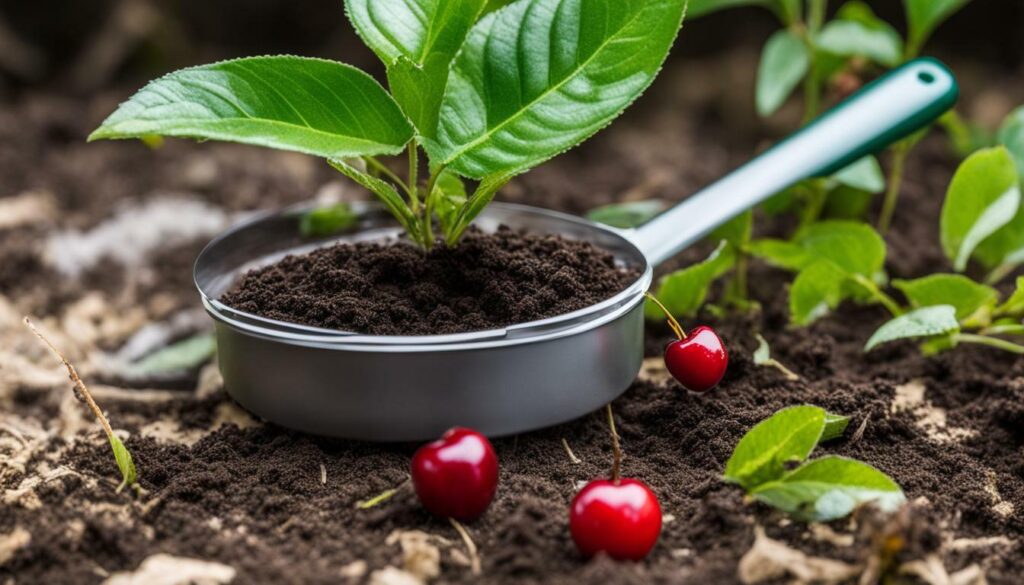
“The key to protecting your Cherry Pie plants from pests and diseases is to be proactive in your approach. Regular monitoring and preventative measures can go a long way in preserving your crop.”
The Effects and Benefits of Cherry Pie Strain
Cherry Pie strain is not just known for its delightful taste and aroma; it also offers a range of effects and benefits for its users.
The strain’s balanced hybrid nature offers a euphoric and creative high that can leave you feeling both relaxed and energized, making it perfect for social situations or creative endeavors. Its high THC content can also provide relief from chronic pain, migraines, and depression.
Additionally, the Cherry Pie strain boasts a sweet and sour flavor profile and a pleasant aroma that can tantalize the senses, making it an excellent choice for those looking for a flavorful smoking experience.
Furthermore, some users have reported that the strain can help alleviate stress and anxiety, allowing for a calm and relaxed mental and physical state.
All in all, the Cherry Pie strain offers a well-rounded package of effects and benefits that make it a popular choice among cannabis enthusiasts.

As a grower of Cherry Pie strain, I have found that this hybrid plant is a delight to cultivate and offers a range of benefits for its users. But don’t just take my word for it! Here are some reviews, tips, and FAQs from other growers and users:
Reviews
“Cherry Pie strain is a great plant to grow. From start to finish, it was easy to manage and produced a generous yield. The buds have a sweet and fruity aroma that is truly delightful.”
– James from California
“I suffer from anxiety and have found Cherry Pie strain to be incredibly helpful in managing my symptoms. It provides a calming effect that helps me relax and soothes my nerves.”
– Sarah from New York
Tips
1. Provide your Cherry Pie plants with plenty of light. This strain thrives under high-intensity lighting, so invest in a good LED or HID grow light.
2. Use high-quality soil or nutrients. Cherry Pie plants require rich soil and specific nutrients, so invest in a good soil mix like Fox Farm or use nutrients such as General Hydroponics Flora Trio.
3. Monitor temperature and humidity levels. Cherry Pie plants prefer a warm, dry environment, so keep your grow room at a temperature between 70-85 degrees Fahrenheit and maintain a humidity level of 40-60%.
FAQs
Q: What is the best time to harvest Cherry Pie buds?
A: The best time to harvest your Cherry Pie buds is when the trichomes have turned from clear to opaque or milky in color. This usually occurs around 8-10 weeks after flowering.
Q: What are some common pests that can affect Cherry Pie plants?
A: Some common pests that can pose a threat to Cherry Pie plants are spider mites, thrips, and aphids. Be sure to regularly inspect your plants and use natural remedies or pesticides to manage these pests.
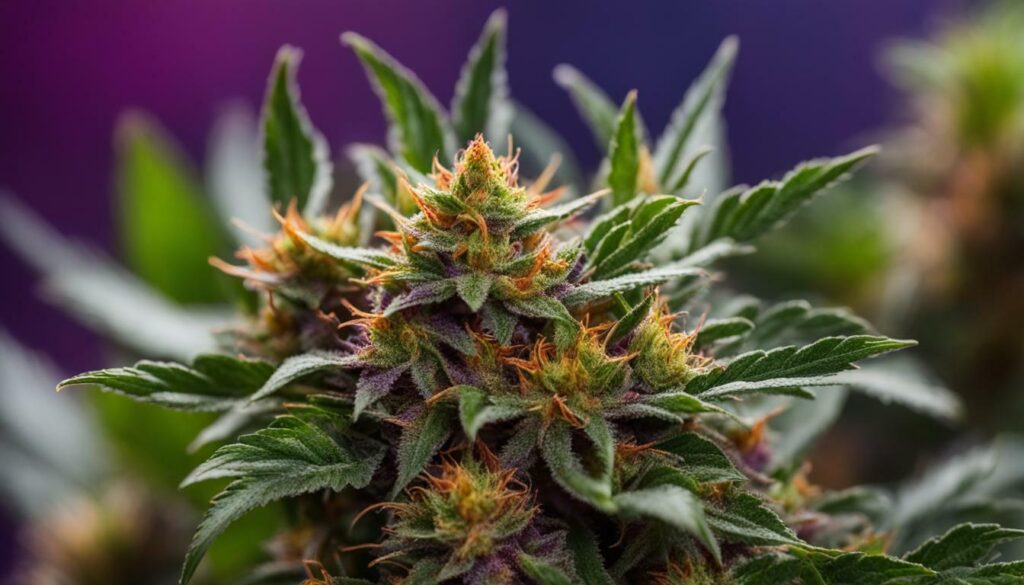
Overall, growing Cherry Pie strain can be a rewarding experience. By following these tips and incorporating the feedback from other growers and users, you can enjoy a successful harvest of this delicious and beneficial hybrid plant.
Conclusion
Now that I’ve shared my tips and techniques for growing Cherry Pie strain, you’re ready to embark on your own journey. Remember that the key to success is providing your plants with the right environment, nourishment, and care they need to thrive.
By selecting the best seeds or clones, creating the perfect growing environment, and following a regular watering and nutrient schedule, you’ll soon be rewarded with a bountiful harvest of aromatic and potent Cherry Pie buds.
Don’t forget to closely monitor your plants for pests and diseases, and take prompt action to protect them as needed.
Finally, make sure to enjoy the journey and celebrate your hard work. With dedication and patience, you’ll be well on your way to becoming a master of growing Cherry Pie strain!
FAQ
Q: How do I choose the right seeds or clones for Cherry Pie strain?
A: Whether you prefer starting from seeds or clones, it’s important to select the best options for growing Cherry Pie strain. Reputable sources like SeedsHereNow.com offer high-quality Cherry Pie strain seeds or clones to ensure a successful start to your growing journey.
Q: What factors should I consider when creating the perfect growing environment for Cherry Pie strain?
A: Providing the ideal environment for your Cherry Pie strain plants is crucial for their healthy growth. Factors to consider include lighting, temperatures, humidity, and airflow. By optimizing your growing space, you can maximize your yield.
Q: How should I nourish and care for my Cherry Pie plants?
A: Properly nourishing and caring for your Cherry Pie plants is essential for their overall health and robust growth. Ensure they receive the specific nutrients they need, establish a watering schedule, and follow general care tips throughout their lifecycle.
Q: When and how should I harvest Cherry Pie buds?
A: The flowering stage is critical for Cherry Pie plants. Look for signs of readiness to harvest, such as mature trichomes and developed buds. Use proper harvesting techniques and follow the curing process to enhance the flavors and potency of your Cherry Pie strain.
Q: How can I protect my Cherry Pie plants from pests and diseases?
A: Even the most well-maintained gardens can face pests and diseases. Learn to identify common threats to Cherry Pie plants and implement effective strategies, such as natural remedies, to prevent and manage these issues.
Q: What are the effects and benefits of Cherry Pie strain?
A: Cherry Pie strain offers a delightful taste and aroma, along with a range of effects and benefits. It has potential therapeutic properties, such as stress relief and anxiety reduction, while also providing euphoric and relaxing sensations.
Q: Are there any reviews, tips, or frequently asked questions about Cherry Pie strain?
A: Yes! In this section, you’ll find reviews and experiences from growers and users of Cherry Pie strain. Discover helpful tips and answers to commonly asked questions to enhance your understanding and cultivation of this popular cannabis strain.
Q: What is the conclusion of growing Cherry Pie strain?
A: Congratulations on mastering the art of growing Cherry Pie strain! By following the steps and techniques outlined in this guide, you are well-equipped to cultivate a successful crop of this aromatic and potent strain. Remember to provide your plants with the care, attention, and optimal growing conditions they need, and enjoy the rewarding experience of growing your own Cherry Pie.